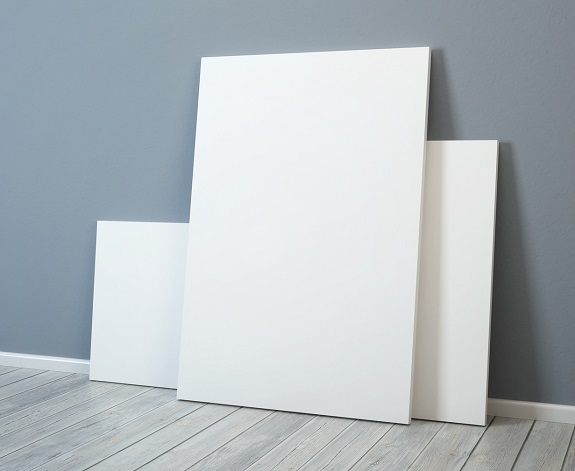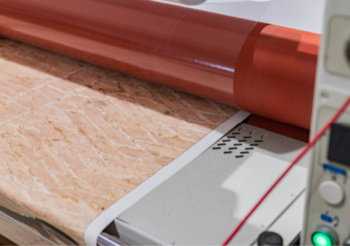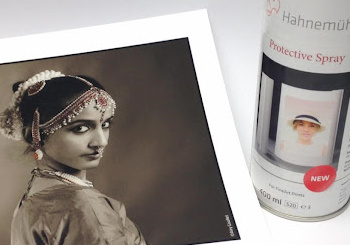With the wide-format inkjet printer in your office and rolls of self-adhesive inkjet media from Freedom Paper you can create your own short-term signs for meetings, events, and promotions. The rigid sign can be wall-mounted, suspended from the ceiling, inserted in display frames, or placed in an easel.
When mounting adhesive papers or vinyls, use a board that has a smooth, even surface. If the mounting surface is rough (like some types of cardboard or posterboard), the adhesive won’t stick well. Or, the rough surface might affect the look and feel of the printed sign surface.

Use an opaque vinyl if you plan to mount the sign to a black or colored sign board. Otherwise, the color of the board will affect the look and legibility of your sign.
Many rigid sign boards are engineered to be dimensionally stable. This means the boards won’t warp, expand, or contract when exposed to humidity or heat. Changes in the shape or dimensions of the board will affect the look of the mounted graphics.
Here are a fewpopular mounting materials for making temporary indoor signs:
Foam Board: This lightweight material consists of a stiff inner layer of a plastic (polystyrene) foam between two outer layers of a smooth, white clay-coated paper. Like Styrofoam, foam board is relatively easy to cut. But foamboard isn’t waterproof, and it can easily break when bent. It also can be easily punctured during handling.
Foam board is often used to mount courtroom photographs, temporary wayfinding signs, or presentation graphics that will be displayed in an easel.
PVC (polyvinylchloride) Boards: This lightweight, smooth, waterproof plastic board is sturdy enough to make indoor signs that can last for decades (with pigment inks). PVC sign boards aren’t recommended for outdoor use because they can warp when exposed to high temperatures.
Polystyrene: This economical rigid foam board is easy to cut, bend, and bond. It is also water-resistant, impact resistant, and dimensionally stable. But it is not very biodegradable.
Coroplast: This tough lightweight board looks like a plastic version of corrugated cardboard. The rigidity comes from a core of parallel plastic tunnels that support two smooth plastic layers. Coroplast is a popular alternative to foam board because it isn’t as easily punctured or nicked. It’s also waterproof. It’s commonly used for single-sided or double-sided yard signs and for simple outdoor signs at one- or two-day events.

Eco-friendly Boards: Some rigid sign boards are made with materials that are more recyclable and biodegradable than plastics. The coated paper on the surface is either made from sustainably managed forests or with recycled papers. Some eco-friendly boards get their rigidity from geometrically structured paper cores, instead of plastic foam.
Other Considerations
Self-adhesive inkjet materials can also be applied to other smooth surfaces, including acrylic (Plexiglas) sheets or office windows, doors, walls, and display cases.
Clear adhesive vinyl can used to print signs and decals for office windows, doors, and display cases. Clear films can also be applied to acrylic (plexiglas) sheets.
If the wide-format inkjet printer in your office uses aqueous dye inks, don’t try to print permanent signage or signs that will be displayed outdoors for more than a day or two. Without the protection of a laminating film with UV filters, dye inks will quickly fade in the sunlight. The water-based dye inks can also run if the sign gets damp.
Today, most rigid signs for outdoor use are printed with flatbed inkjet printers that use outdoor-durable UV-cure inks. Instead of printing on adhesive materials that need to be mounted, flatbed printers output promotional messages directly on the rigid sign materials, including wood, aluminum, or aluminum composite panels. The UV-cured ink forms such a hard film on the board that the prints don’t even have to be laminated to withstand the rigors of the great outdoors.
At Freedom Paper, we offer more than 25 types of self-adhesive materials for use with wide format inkjet printers. You can buy small quantities of rigid materials from Amazon or stores that sell sign, classroom, office, or craft supplies.
If you have questions about which self-adhesive inkjet media would be best for a specific application, chat with us online at www.freedompaper.com or call us at 1-866-310-3335



